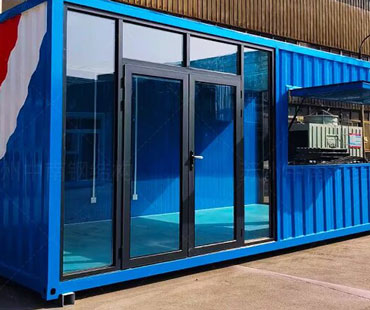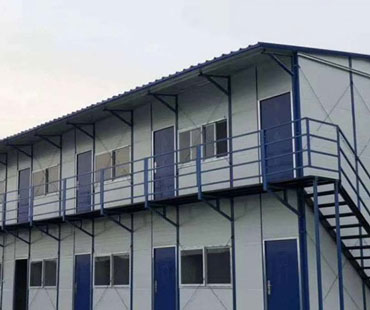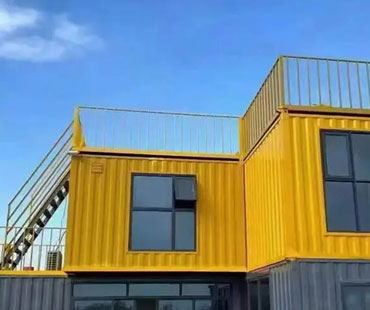In an era characterized by globalization and rapid technological advancement, the shipping container has emerged as a pivotal element in modern supply chains. This seemingly simple metal box has not only revolutionized the logistics industry but has also transformed the very nature of trade, urban planning, and economic interactions. From bustling ports to urban centers, containers play a vital role in the efficient movement of goods, shaping both local economies and global markets.
The concept of containerization traces its origins to the mid-20th century when Malcolm McLean, an American trucking entrepreneur, introduced the modern shipping container. Prior to this innovation, goods were transported in bulk, leading to inefficiencies and high labor costs associated with loading and unloading cargo. McLean’s standardized containers allowed goods to be packed, transported, and unpacked with unprecedented efficiency. This revolutionary approach drastically reduced shipping times and costs, paving the way for a new era of global trade.
As containerization gained traction, it became evident that ports would need to adapt to accommodate this new method of shipping. Major ports around the world invested heavily in infrastructure, including container terminals equipped with cranes, automated systems, and sophisticated tracking technologies. This investment in port infrastructure not only enhanced operational efficiency but also positioned ports as critical hubs in the global supply chain network.
Ports serve as the critical junctions where maritime shipping meets land transportation. The efficiency of a port directly impacts the broader supply chain, as delays in unloading and transferring containers can create bottlenecks that ripple through the entire logistics network. Major ports such as Shanghai, Rotterdam, and Los Angeles have become key players in global trade, handling millions of containers annually.
These ports have evolved into integrated logistics centers, where various modes of transportation—ships, trucks, and trains—converge. This integrated approach is essential for ensuring the timely delivery of goods. For instance, a container arriving at a port must be swiftly transferred to a truck or train to minimize delays and meet consumer demand. The coordination and efficiency of this process are vital for businesses that rely on just-in-time inventory systems, where the timing of deliveries is critical to maintaining production schedules.
As e-commerce continues to reshape consumer behavior, the role of containers in urban supply chains has become increasingly significant. The demand for rapid delivery has led to innovative uses of containers within cities. Urban areas are seeing the rise of container-based businesses, such as pop-up shops, food stalls, and micro-warehouses, which provide flexibility and cost-effectiveness in a dynamic retail environment.
Additionally, the use of containers for last-mile delivery solutions has gained popularity. With the rapid growth of online shopping, there is a pressing need for efficient delivery systems that can navigate the complexities of urban infrastructure. Containers can be strategically placed in urban centers to serve as temporary storage facilities, allowing for quicker distribution to consumers. This approach not only enhances delivery efficiency but also helps alleviate congestion in busy city streets.
The environmental implications of shipping and logistics are increasingly coming under scrutiny. Containers offer unique opportunities for promoting sustainability within supply chains. Their inherent durability and reusability contribute to a circular economy, where materials are kept in circulation rather than disposed of after a single use. Many companies are now repurposing used shipping containers for various applications, including affordable housing, community spaces, and even vertical farms, thereby reducing waste and promoting sustainable practices.
Moreover, as cities strive to reduce their carbon footprints, the logistics industry is exploring greener alternatives. Innovations such as electric delivery vehicles, solar-powered shipping containers, and sustainable packaging materials are being integrated into supply chains. These advancements not only minimize environmental impact but also cater to the growing consumer demand for sustainable products and practices.
Despite the advantages of containerization, the logistics industry faces several challenges that can hinder operational efficiency. Port congestion remains a significant issue, particularly during peak shipping seasons or in the aftermath of global disruptions, such as the COVID-19 pandemic. Delays at ports can lead to increased costs and supply shortages, underscoring the need for improved infrastructure and management practices.
Furthermore, the global nature of supply chains means that they are vulnerable to geopolitical tensions, natural disasters, and other external factors that can disrupt the flow of goods. To address these challenges, companies are increasingly investing in technology and data analytics to enhance supply chain visibility and resilience. By leveraging real-time data, businesses can make informed decisions, anticipate disruptions, and develop contingency plans to mitigate risks.

Looking ahead, the role of containers in supply chains is poised to evolve further. Advances in technology and changing consumer expectations will drive innovations in container logistics. Concepts such as autonomous shipping, smart containers equipped with IoT sensors, and drone delivery are on the horizon, promising to enhance the efficiency and effectiveness of logistics operations.
Moreover, urbanization is expected to continue its rapid pace, placing additional pressure on cities to adapt their infrastructure to accommodate the growing demand for goodsand services. As urban areas expand, the integration of container logistics into city planning will become increasingly essential. This includes optimizing the placement of container hubs to ensure that goods can be delivered quickly and efficiently while minimizing congestion and environmental impact.
The integration of advanced technologies into container logistics will shape the future of supply chains. The adoption of artificial intelligence (AI) and machine learning can enhance predictive analytics, enabling companies to forecast demand more accurately and optimize inventory management. Technologies such as blockchain can improve transparency and traceability across the supply chain, helping to reduce fraud and enhance security.
Moreover, the Internet of Things (IoT) will play a critical role in the future of container logistics. Smart containers equipped with sensors can monitor conditions such as temperature, humidity, and location in real time, ensuring that sensitive goods are transported under optimal conditions. This level of monitoring not only enhances product quality but also allows for proactive responses to potential issues before they escalate into larger problems.
The complexity of modern supply chains necessitates collaboration among various stakeholders, including shipping companies, port authorities, logistics providers, and retailers. Collaborative approaches can lead to shared resources, improved communication, and more efficient operations. For instance, partnerships between shipping lines and logistics companies can help streamline the movement of containers from ports to final destinations, reducing lead times and costs.
Additionally, public-private partnerships can help address infrastructure challenges in urban areas. By working together, governments and private entities can invest in the necessary infrastructure improvements to accommodate increased shipping volumes and enhance the overall efficiency of urban logistics. This collaborative mindset will be critical as cities continue to adapt to the demands of a globalized economy.
The shipping container has become a cornerstone of modern supply chains, playing an essential role in facilitating global trade and local distribution. As we move further into the 21st century, the importance of containers will only continue to grow, driven by advancements in technology, changes in consumer behavior, and the need for sustainable practices.
From ports to urban environments, containers are not merely tools for transportation; they embody the evolution of logistics and supply chain management. As cities and industries embrace innovative solutions to address the challenges of modern logistics, the humble shipping container will remain at the forefront, bridging the gap between global supply chains and local economies.
In summary, the journey from port to city illustrates the profound impact of containers on our world. As we enhance our logistics systems and adapt to an ever-changing landscape, the key role of containers will be essential for fostering economic growth, driving innovation, and promoting sustainability in the years to come. The future of supply chains lies in our ability to leverage the potential of containers, ensuring that they continue to serve as vital conduits for commerce and connectivity in an increasingly interconnected world.


